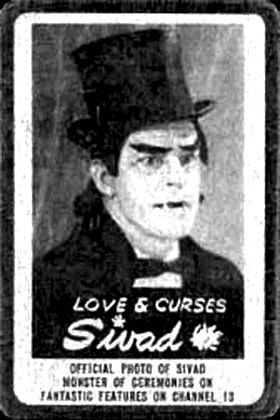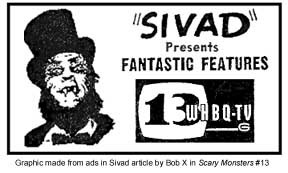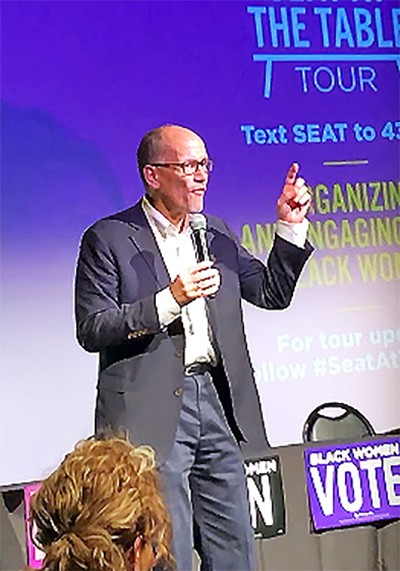Last month I got a curious envelope from the health insurance company Humana.
My wife and I are both self-employed freelancers. With no employer group plan to join, we must buy our health insurance on the individual market.

Every year for the last decade, I have spent hours researching our options, trying to find the best coverage for the best price. Before the passage of the Affordable Care Act (ACA, aka Obamacare), we were paying ruinously high premiums and receiving only the barest of benefits. Pre-ACA, a single emergency room visit that turned out to be a false alarm ended up costing us more than $5,000. When the ACA took effect in 2014, we were among the first wave of customers to find coverage on the Health Care Marketplace. It was a dramatic improvement over the former, so-called “free market” for health insurance. Our premiums immediately dropped by more than 50 percent, and our coverage improved dramatically. A recent emergency room visit that was not a false alarm cost a little over $800.
But last year, as the Trump regime came into power, our choices on the Health Insurance Marketplace dwindled to one company. Now we were in the same boat with the hundreds of millions of Americans who get their health insurance through their employer: health insurance “choice” in name only. The real decisions are being made by unaccountable bureaucrats your workplace and the monolithic, uncaring health care companies that can endanger a company with a single price quote, and bankrupt families at their whim.
That’s why the envelope from Humana was so curious. Humana had been our health insurance company for two years, but not in 2018. When they announced their pullout from the individual health insurance market in 2017, they claimed they were losing money because by were taking on too many sick people and not enough healthy people to balance out their risk pool.
So, when I opened the envelope, I was shocked to see a check from Humana, along with a letter explaining that it was a rebate required under the ACA’s Medical Loss Ratio provision. That section of the ACA mandates that health insurance companies selling policies on the individual marketplace must spend at least 80 percent of the money that comes in as premiums on actual medical care. The other 20 percent can be used for overhead, paying salaries, and taking profits. The ACA’s Medical Loss Ratio for employer-provided health insurance is only 15 percent, meaning the individual market is, by law, the most profitable segment of health insurance industry.
The letter, which was signed by Bruce Broussard, CEO of Humana Insurance Company, informed me that, “In 2017, Humana spent only 78.1 percent of a total of $372,479,024 in premium dollars on health care and activities to improve health care quality.” That means that, after rebating $7,077,191, Humana took home $74,495,804 from Tennessee premium payers in 2017. I don’t have an MBA, but that doesn’t sound like losing money to me. And yet it was not enough to keep Humana in Tennessee. According to the Louisville Courier-Journal, Broussard personally took home $19 million in salary, bonuses, and stock options in 2016, so you’d think Humana would need that $74 million to keep him in the manner to which he is accustomed. My attempts to get Humana to comment for this piece by calling the number they provided in their letter went comically awry.
In retrospect, Humana’s decision to leave $74 million on the table by withdrawing from a profitable individual health insurance marketplace looks less like a business decision and more like a political decision. When the company announced the decision in February 2017, it had just been denied permission by the Justice Department to merge with Aetna, and the Republican drive to repeal the ACA was in full swing. Humana’s announcement was trumpeted by Trump on Twitter as proof that “Obamacare continues to fail.” Did Broussard decide to see if he could curry favor with the president and get a favorable ruling on future mergers? We’re about to find out: Wal-Mart, which runs thousands of pharmacies across America, is currently in talks to buy Humana, which is valued at $37 billion. If that happens, people like Broussard, who own thousands of shares of Humana stock, will profit handsomely.
Lying and bad faith by a major health insurance corporation is not an aberration. As anyone who has received a baffling “benefit statement” from their insurer already knows, it’s the norm. The deeper lesson here is that health insurance companies simply cannot be trusted. Barack Obama won the presidency with a promise to fix America’s broken health-care industry. The Affordable Care Act was not a socialist government takeover of health care. It is a market-based solution designed by the right-wing think tank Heritage Foundation, and first implemented in Massachusetts under Republican governor (and Obama’s opponent) Mitt Romney.
It was a typically Obama-esque attempt to carve out a compromise with the Republicans, and those same Republicans have spent the last four years throwing that compromise back in our faces. First, they sued to allow states to opt out of the law’s Medicare expansion, which is why tens of thousands of poor Tennesseans find themselves without health care today, and rural hospitals in the state are closing. Then, when they gained control of Congress, they voted dozens of times to repeal Obamacare. Once Trump was elected, even though their repeal attempts were thwarted by massive public outcry, they have still attempted to sabotage the ACA by any means means necessary. As I write this, Newsweek has reported that the repeal of the ACA’s individual mandate will increase health insurance premiums by 16 percent next year.
It’s clear from their actions that the Republicans and their corporate paymasters will never accept a deal on health care, even one like Obamacare that guarantees them tens of millions of dollars in profits. Nor do they intend to honor any agreements with Democrats. The time for compromise and half measures has long passed. With support for single payer health care currently polling at 52 percent nationally, it’s time for Medicare For All. For-profit, employer-based health insurance is the reason it’s so hard to find a full time job even at a time of low unemployment. It has produced the only nation in the developed world where health care costs are the leading cause of bankruptcy. The United States not only has the highest health care costs in the developed world, but also the worst health outcomes. We’re paying too much for too little.
When you go to the polls next week, remember that Democrats like Congressman Steve Cohen want to fix the system, and gubernatorial candidate Karl Dean has vowed to make expanding Medicare in Tennessee a top priority, while Republicans like Marsha Blackburn only want to see you stay sick, broke, and indentured to your health insurance company. Medicare For All is an idea whose time has come. For the sake of your health and wealth, vote on November 6th.






 Larry Kuzniewski
Larry Kuzniewski  Larry Kuzniewski
Larry Kuzniewski  Larry Kuzniewski
Larry Kuzniewski  JB
JB  Memphis City Council
Memphis City Council 

 Shelby County District Attorney General
Shelby County District Attorney General  Shelby County District Attorney General
Shelby County District Attorney General